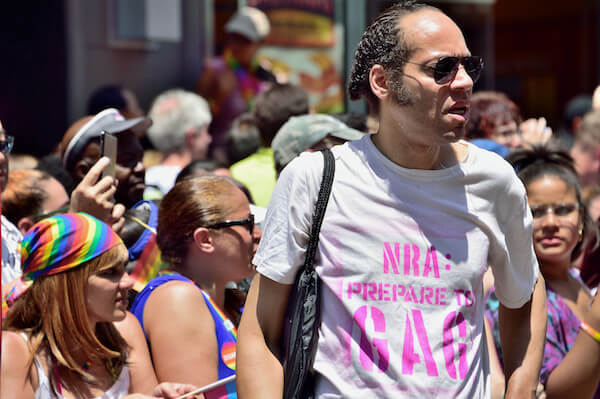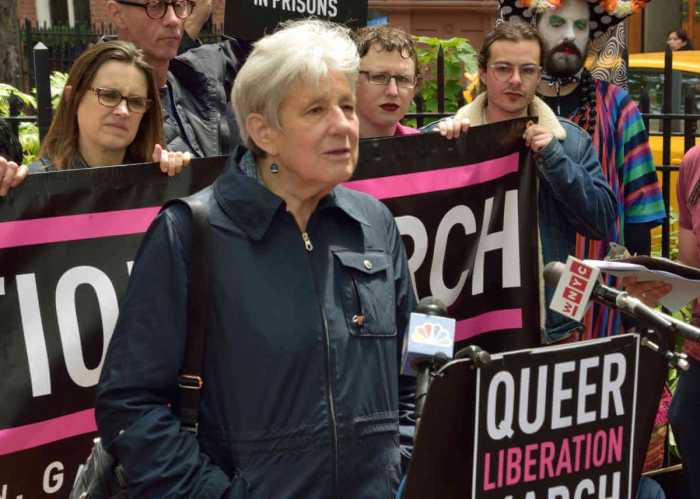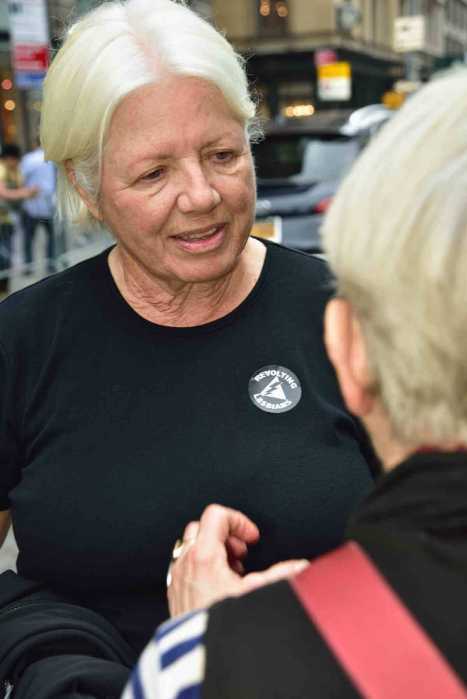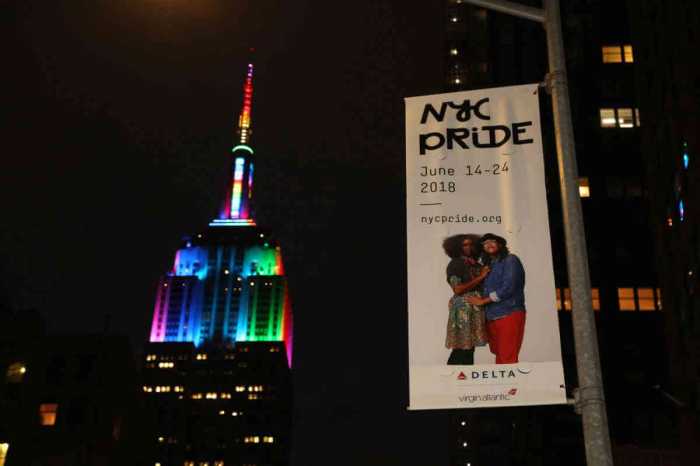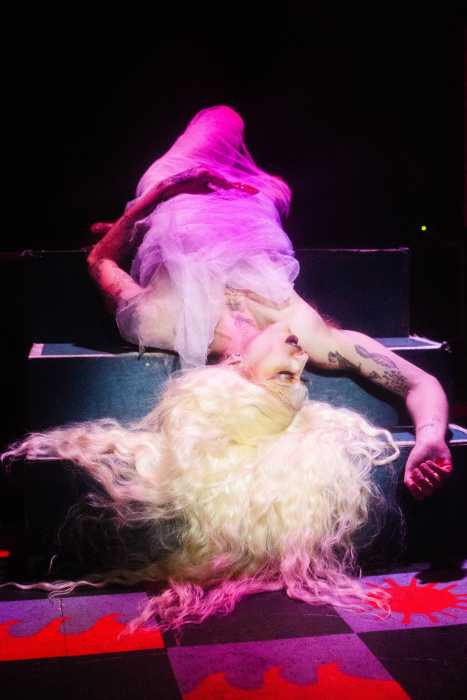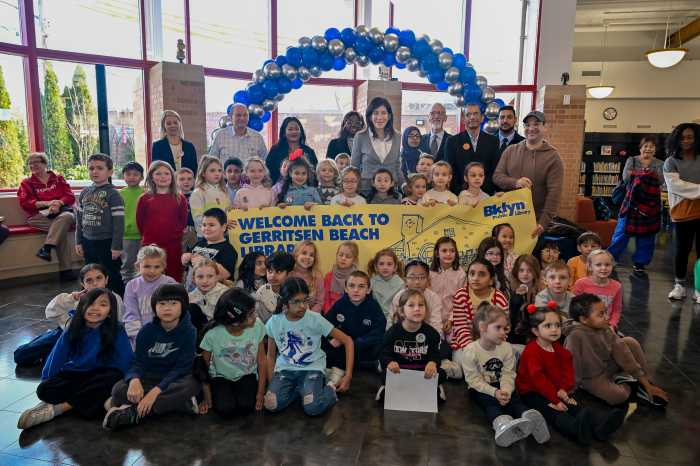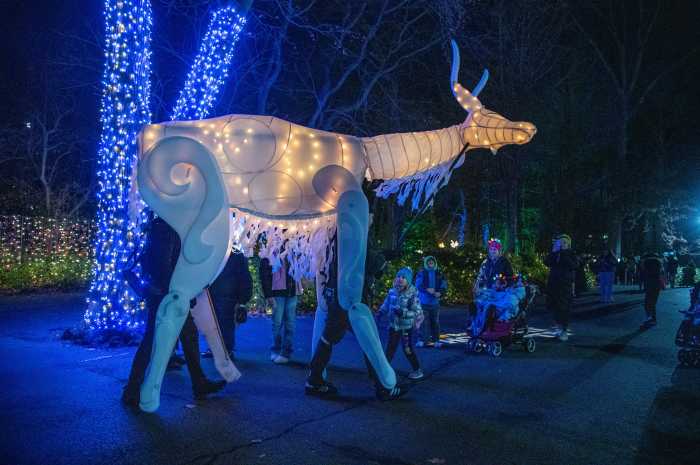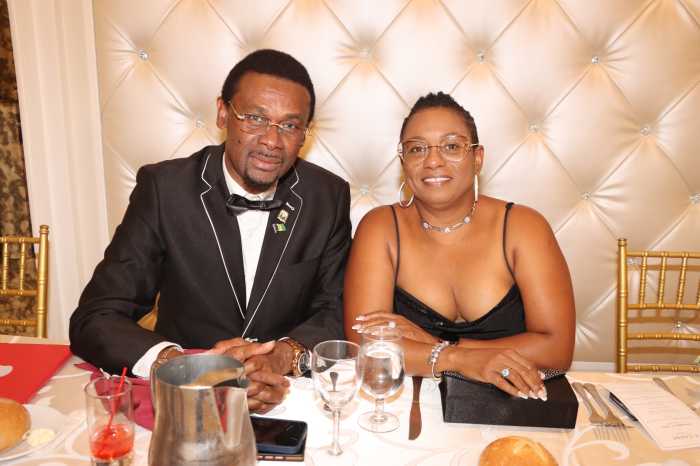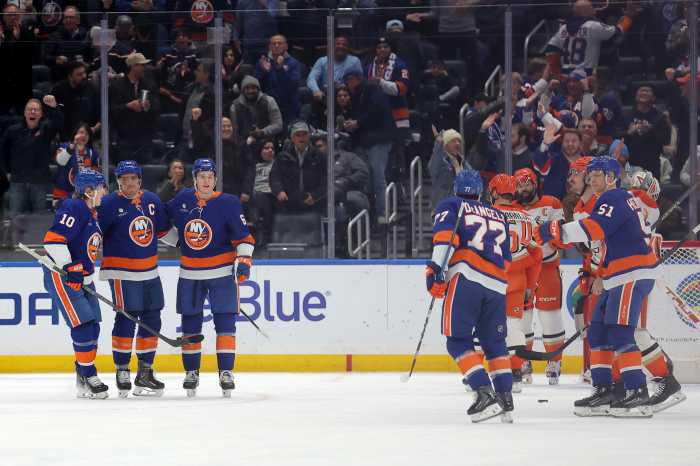Gays Against Guns march behind a banner created by Gilbert Baker, designer of the Rainbow Flag. | DONNA ACETO
The killings of 49 LGBT people in an Orlando, Florida nightclub were a pronounced presence in New York City’s Pride Parade as a newly formed group of nearly 1,000 marched down Fifth Avenue to chants of “Trans, straight, bi, gay, gagging on the NRA” and “Fuck the NRA.”
“The energy was terrific, we’re just getting started,” said Cathy Marino-Thomas, who was among the organizers who wrangled the group, Gays Against Guns, down the avenue behind a banner bearing the group’s name. The banner was designed by Gilbert Baker, the creator of the Rainbow Flag.
The group, the GAG in some of its chants, signs, and T-shirts, was formed by Kevin Hertzog and Brian Worth following the June 12 killings. The gunman struck on Latinx night at the club, and the dead and wounded were overwhelmingly Latinx and African-American.
Behind a second banner, anti-gun activists fold into a die-in. | DONNA ACETO
Hertzog and Worth organized the contingent in two town hall meetings held at the Lesbian, Gay, Bisexual & Transgender Community Center. They were assisted by clothing designer Mari Gustafson, who held a silk screen party at an East Village bar the day before the June 26 march and produced T-shirts reading “NRA: Prepare to be gagged,” “Gays Against Guns,” and “Your tolerance is killing us.” A second group immediately in back of the first part of the contingent marched behind a banner, also designed by Baker, that read “Republican Hate Kills.”
Anti-gun marchers stage a die-in. | DONNA ACETO
The group chanted loudly as it marched, and the crowds on Fifth Avenue frequently joined the “Fuck the NRA” chant as GAG marched. At multiple points along the avenue, members staged die-ins and chanted “How many more have to die?” as they fell to the asphalt.
Performance artist Tigger-James Ferguson organized 49 people who were dressed entirely in white and veiled and carried posters bearing the pictures, names, and ages of the 49 people killed. Those 49 people marched silently and did not participate in the chants and die-ins so they formed a sorrowful, almost ghostly presence that was powerful and respectful of those who died and contrasted with the political message of the first two groups.
A group of 49 people organized by performance artist Tigger-James Ferguson bore silent witness to those killed in the Pulse nightclub in Orlando. | DONNA ACETO

Several hundred groups marched in this year’s parade and hundreds of thousands lined the streets along the parade route. Hillary Clinton, the presumptive Democratic nominee for president, marched as did Governor Andrew Cuomo and Mayor Bill de Blasio.
GAG was able to enter the parade past the deadline for registering because Corey Johnson, the out gay city councilmember who represents Chelsea, invited them into his spot in the parade. Heritage of Pride, which produces the annual march and other events that commemorate the 1969 Stonewall riots that mark the start of the modern LGBT rights movement, agreed to the change after some initial resistance.
The day, however, was not without dissent. Three libertarian groups and a chapter of the Pink Pistols, a pro-gun LGBT group, held a press conference late in the day and challenged the prevailing sentiment that was seen in the march.
Thomas Simmons, a member of Outright Libertarians, spoke out in favor of gun rights in Times Square on the afternoon of the Pride March. | DUNCAN OSBORNE
“I have a license to carry in the state of Massachusetts because as a gay man I know I am statistically more likely than almost any other demographic in the United States to be assaulted,” said Thomas Simmons, a Massachusetts resident who traveled to New York City. “I want the right to protect myself.”
Simmons, a member of Outright Libertarians, was joined by Steve Scheetz, a member of People Against the Initiation of Violence and a Libertarian Party candidate for Congress from Pennsylvania. A member of Pink Pistols was supposed be on hand to speak but could not leave work and, similarly, a member of the group Muslims for Liberty who was supposed to speak was stuck in traffic.
Gun rights critics sported T-shirts silk-screened under the supervision of clothing designer Mari Gustafson. | DONNA ACETO
Simmons’ broader point was that the Bill of Rights, the first 10 amendments to the US Constitution, is to be interpreted broadly to maximize the freedoms that document affords to the people. Limits on those rights, he said, effectively eliminate them. He also argued that it was common for federal, state, and local governments to overreact to events such as the June 12 attack.
“Every time there’s a crisis in this country, there’s an assault on the Bill of Rights,” he said.
Scheetz said that self-defense was both legally and morally right and that if people in the Pulse nightclub in Orlando had been armed, the outcome on June 12 might have been different.
“Pink Pistols, they’re people who believe in self-defense,” Scheetz said. “I believe in self-defense, every person has a right to self-defense. Whatever tool you use for self-defense is fine by me… If people were there and able to protect themselves, then people with guns, people who want to commit murder are not going to go to a place where they know people are armed.”

